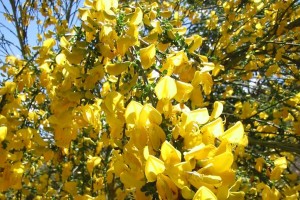Broom leaf beetle
Image: broom leaf beetle (Gonioctena olivacea).
History in New Zealand
The broom leaf beetle is native to Europe and was first imported for testing in 1995. An application to release the beetle was declined in 1997 due to insufficient information about the possible positive and negative consequences. A detailed cost–benefit analysis was later completed and a second application to release the beetle was made in 2006. This time permission was granted, and the first release was made towards the end of that year. Widespread releases have since been made and establishment has been confirmed.
How would I find/recognise it and what is its lifecycle?
You may see the adult beetles on broom plants during spring and summer. Males are usually smaller (2.2–4.1 mm long) than females (3.9–5.0 mm long). Females tend to be goldish-brown in colour while males tend to have an orangey-red tinge, but colouration can be quite variable. There are no other beetles of this size and colour on broom that you could confuse them with.
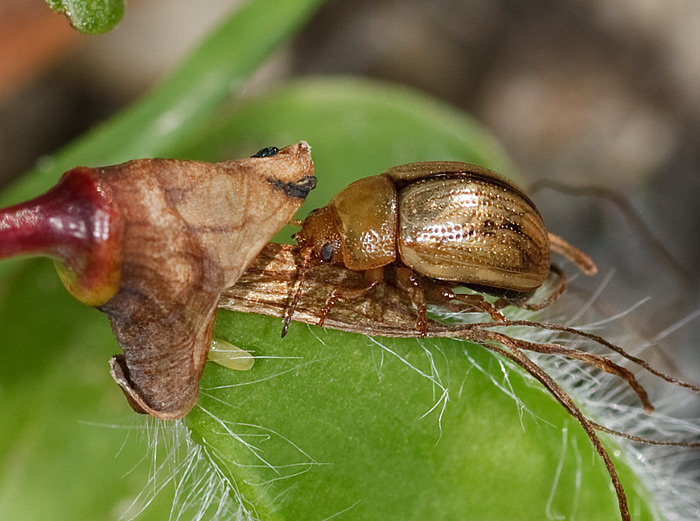
Image: broom leaf beetle adult.
The adults are long-lived and may survive for three seasons, but they do not reproduce until after they have been through one winter.
Once mature, females lay oval eggs, one at a time, mainly on upper surfaces of leaves. The eggs take about 18 days to hatch into larvae that resemble small brown crocodiles. Look for them feeding on the leaves and shoot tips in late spring and early summer.
Image: broom leaf beetle egg.
The larvae grow through four instars and once fully grown, they pupate for nearly 3 weeks in the leaf litter.
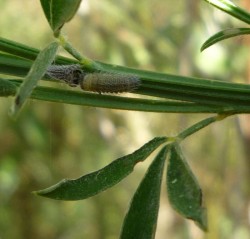
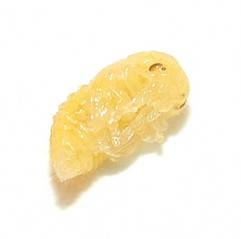
Image: broom leaf beetle larvae (left) and pupae (right).
New adults emerge during summer and early autumn and feed for a couple of weeks before entering the soil or litter beneath bushes to hibernate over winter. The following spring, these immature beetles and the older mature beetles emerge over a protracted period of several months. Because eggs are also laid over a period of 3–4 months, you may at times be able to find all the developmental stages at once.
Broom leaf beetles are easy to differentiate from other broom biological agents.
See Broom gall mite, Broom seed beetle, Broom psyllid, Broom shoot moth, Broom twig miner.
How does it damage broom?
The adults damage broom by feeding on the leaves and growing points, and the mobile larvae feed on the same parts as well as on fleshy green stems.
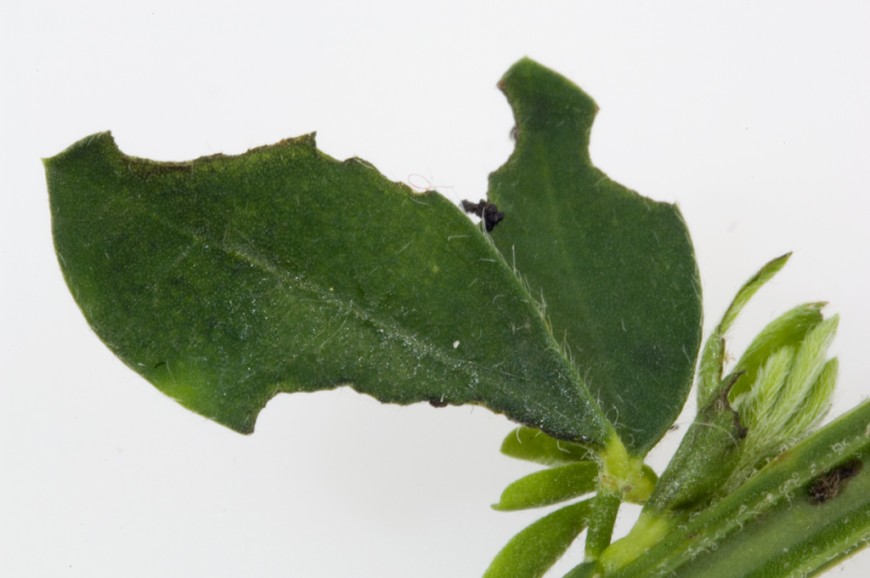
Image: broom leaf beetle adult feeding damage.
In Europe, this insect sometimes completely strips plants of all their foliage. Heavy feeding reduces the photosynthetic area available to the plant, and because the growing stems are damaged, this further reduces the growth rate of broom plants.
Will it attack other plants?
Yes, while broom is the preferred host, it is likely that the broom leaf beetle will attack tree lucerne (Cytisus proliferus) to some extent, and it occasionally may attack ornamental brooms (Cytisus spp.), tree lupin (Lupinus arboreus) and possibly other lupins (Lupinus spp.). A cost–benefit analysis came out strongly in favour of releasing the beetle despite some possible non-target attack, because of the serious threat broom currently poses to New Zealand.
How effective is it?
It is too soon to know what impact the broom leaf beetles will have in New Zealand.
How can I get the most out of it?
As soon as the beetles are present in harvestable numbers, it would be worth making an effort to establish them in all areas where they are needed.
How do I select a release site?
Read Guidelines for selecting release sites for biocontrol agents.
How do I collect it for release at other sites?
In spring, beat broom plants with a stick over a beating tray (or a large piece of white material or cardboard) and collect any beetles that have been dislodged with a pooter attached to a compressor. You should aim to shift at least 100 beetles to each new site. Put the beetles into suitable container and then simply tip the contents out over broom bushes at the new site.
How do I manage the release sites?
Avoid any activities that will interfere with the leaf beetles, such as herbicide application. If you need to undertake control measures, then avoid the release site.
Key Contact


